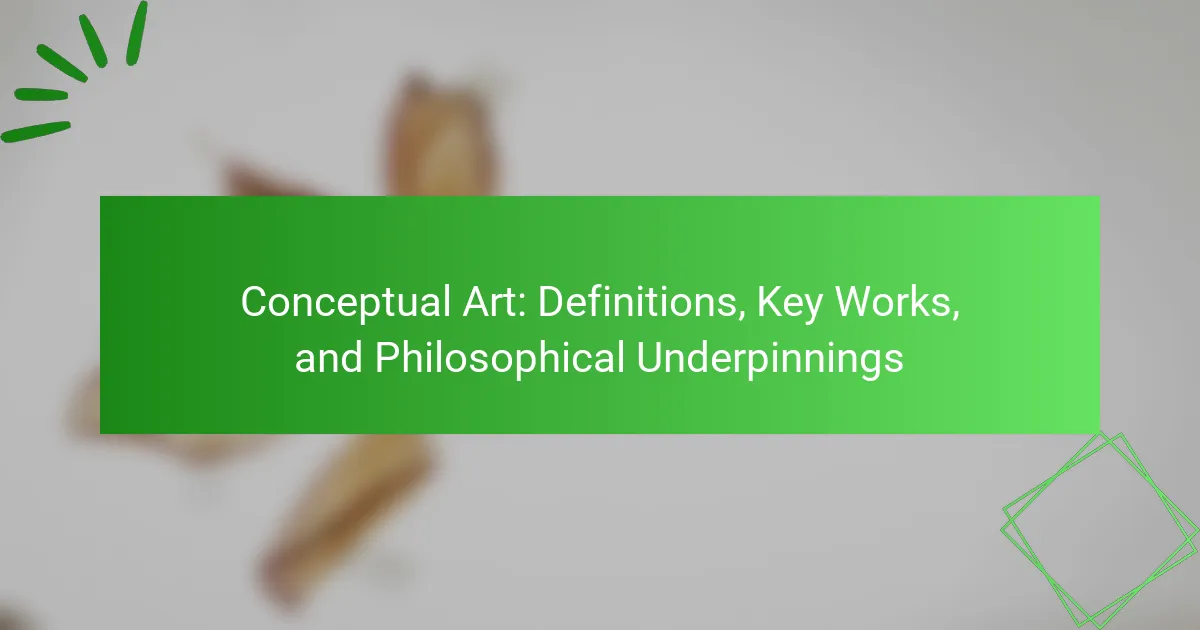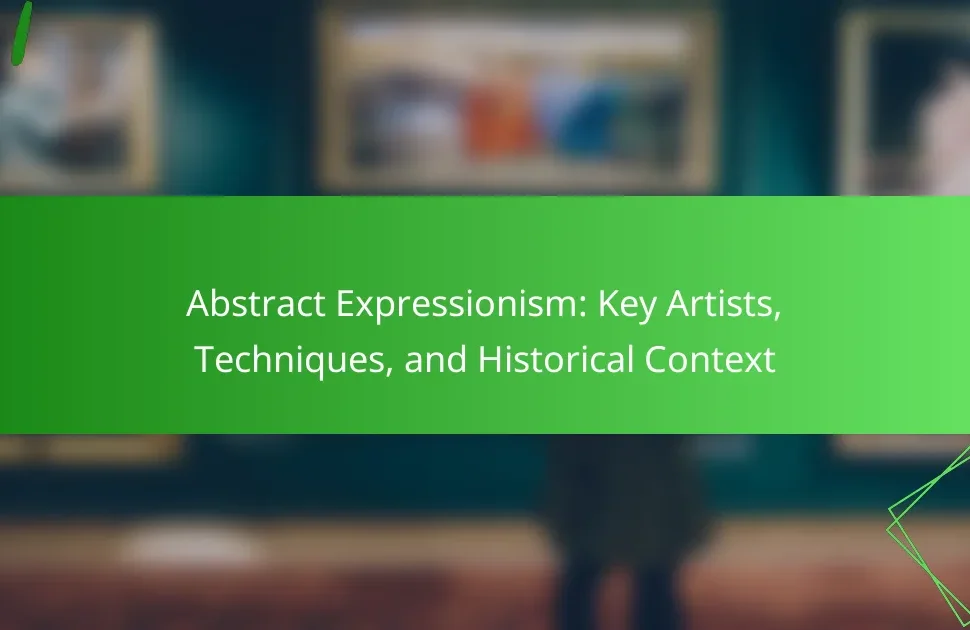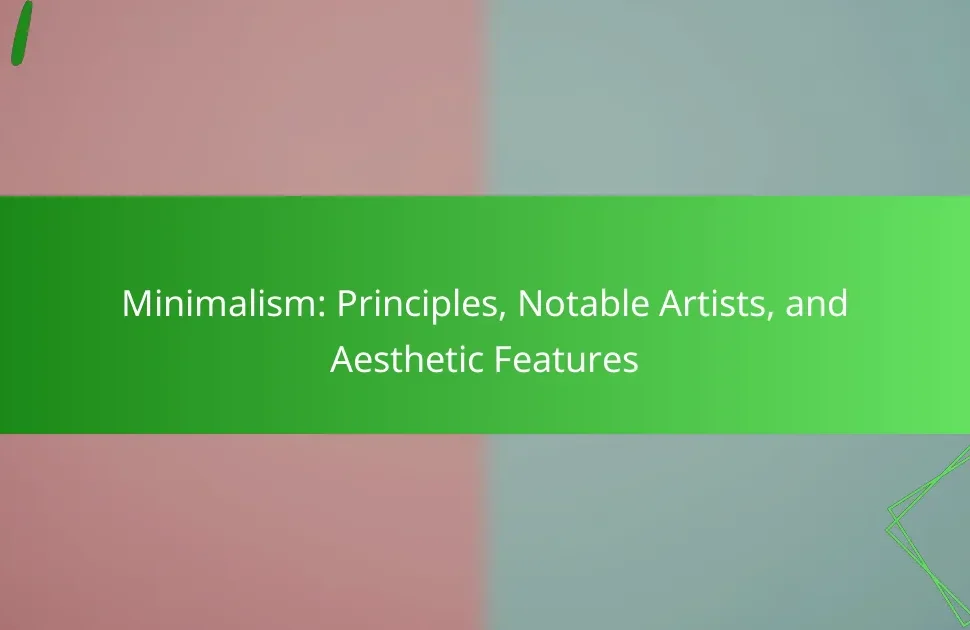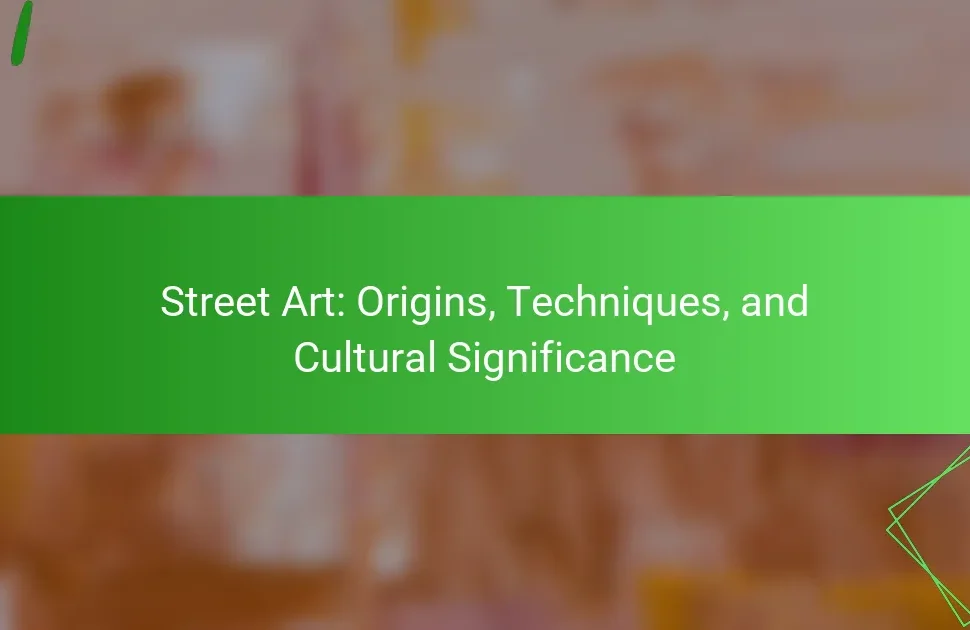Conceptual art prioritizes ideas over aesthetics, challenging traditional artistic boundaries. This article explores key works that define the movement, such as Marcel Duchamp’s “Fountain,” and examines the philosophical underpinnings that shape its significance. It also addresses cultural influences on interpretation and dispels common misconceptions surrounding the form. Finally, the practical applications of conceptual art in education, business, and public spaces will be discussed.
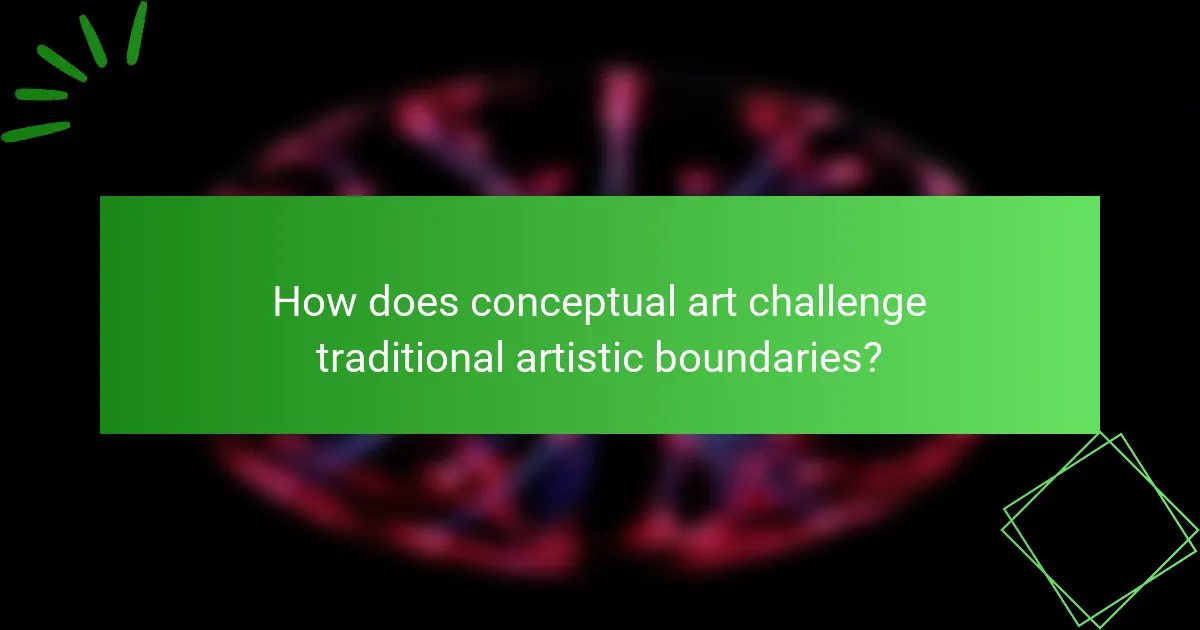
How does conceptual art challenge traditional artistic boundaries?
Conceptual art challenges traditional artistic boundaries by prioritizing ideas over aesthetics. It shifts focus from the final artwork to the artist’s concept, prompting viewers to engage intellectually. This movement often utilizes unconventional materials and methods, redefining what constitutes art. Key works, like Marcel Duchamp’s “Fountain,” exemplify this shift by presenting everyday objects as art, questioning the nature and purpose of artistic expression. As a result, conceptual art encourages a broader interpretation of creativity, emphasizing context and meaning over form.
What are the defining characteristics of conceptual art?
Conceptual art prioritizes ideas over traditional aesthetics, emphasizing the concept behind the artwork. Key characteristics include the use of language and text, often challenging the viewer’s perception of art. Notable works, such as Marcel Duchamp’s “Fountain,” exemplify this approach by transforming everyday objects into art. Conceptual art often reflects philosophical underpinnings, questioning the nature and purpose of art itself.
Why is audience engagement crucial in conceptual art?
Audience engagement is crucial in conceptual art because it fosters dialogue and interpretation. This interaction allows viewers to connect with the ideas behind the artwork, enhancing their understanding and appreciation. Engaged audiences can explore the philosophical underpinnings of conceptual art, such as the value of ideas over traditional aesthetics. Furthermore, active participation can lead to new interpretations, enriching the overall experience and impact of the artwork. Engaging audiences transforms them from passive observers into active participants, making the art more meaningful.
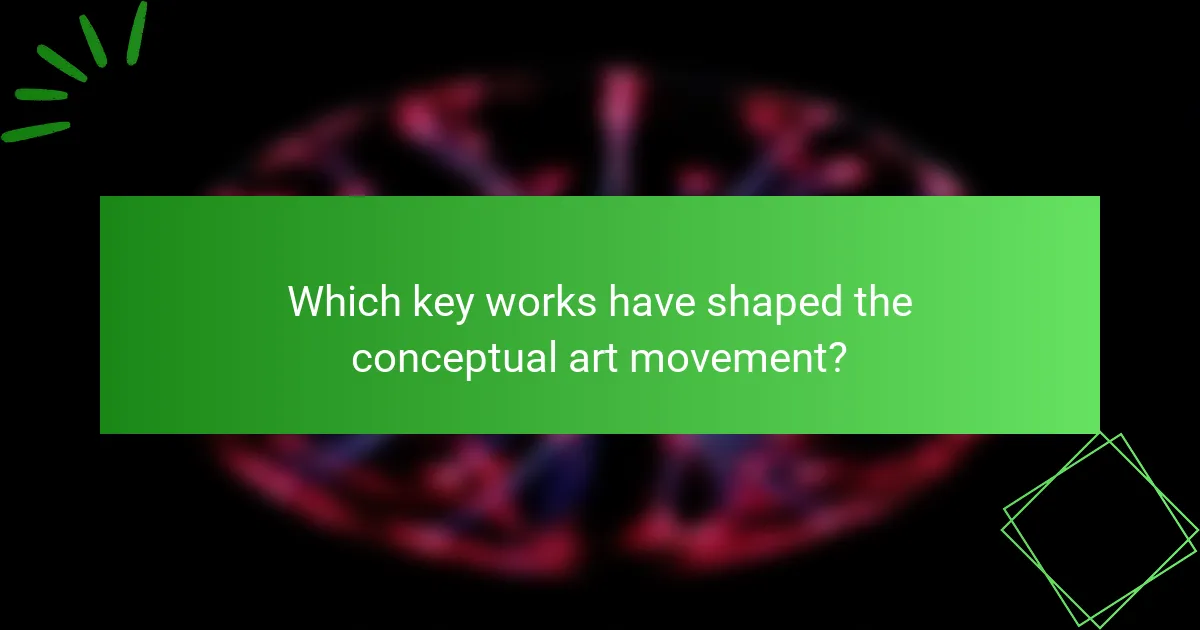
Which key works have shaped the conceptual art movement?
Key works that have shaped the conceptual art movement include Marcel Duchamp’s “Fountain,” Sol LeWitt’s “Paragraphs on Conceptual Art,” and Joseph Kosuth’s “One and Three Chairs.” These pieces emphasize ideas over traditional artistic techniques. Duchamp’s work challenges the definition of art, while LeWitt’s writings provide a theoretical framework. Kosuth’s piece explores the relationship between language and representation, highlighting the movement’s philosophical underpinnings. Other notable works include Yoko Ono’s “Cut Piece” and Dan Graham’s “Public Space/Two Audiences,” both of which engage viewers in interactive experiences.
How did Marcel Duchamp’s “Fountain” redefine art?
Marcel Duchamp’s “Fountain” redefined art by challenging traditional definitions and emphasizing the concept over the object. This work shifted focus from craftsmanship to ideas, establishing conceptual art as a legitimate form. Duchamp’s choice of a urinal as art questioned societal norms and the role of the artist. As a result, it paved the way for future avant-garde movements, highlighting the importance of context and interpretation in art.
What impact did Sol LeWitt’s wall drawings have on conceptual art?
Sol LeWitt’s wall drawings significantly influenced conceptual art by emphasizing ideas over execution. His approach shifted focus toward the conceptual framework behind art, encouraging artists to prioritize thought processes.
LeWitt’s instructions for creating wall drawings allowed for varied interpretations, reinforcing the notion that art can exist as an idea rather than a physical object. This unique attribute of his work challenged traditional art forms and inspired movements that value conceptual over material aspects.
As a result, his contributions helped establish conceptual art as a legitimate genre, fostering a broader acceptance of diverse artistic expressions. The impact of his wall drawings continues to resonate within contemporary art practices, encouraging artists to explore the boundaries of creativity and the definition of art itself.
How does Yoko Ono’s “Cut Piece” exemplify participatory art?
Yoko Ono’s “Cut Piece” exemplifies participatory art by inviting audience interaction as a central element. The performance requires spectators to cut pieces from Ono’s clothing, transforming them from passive viewers to active participants. This engagement blurs the lines between artist and audience, emphasizing collaboration. The work challenges traditional art dynamics, showcasing vulnerability and communal experience. As a result, “Cut Piece” embodies the essence of participatory art, where the audience directly influences the artwork’s outcome.

What philosophical underpinnings influence conceptual art?
Philosophical underpinnings of conceptual art emphasize ideas over aesthetic value. Key influences include Dadaism, which challenged traditional art norms, and the writings of philosophers like Ludwig Wittgenstein, who explored language and meaning. Conceptual art often reflects existential themes, questioning the nature of reality and perception. The movement’s roots in modernism further emphasize the importance of context and concept, shaping its unique attributes and intentions.
How does conceptual art relate to postmodernism?
Conceptual art is deeply intertwined with postmodernism, challenging traditional artistic norms and emphasizing ideas over aesthetics. This movement often critiques cultural narratives, reflecting the postmodern ethos of questioning authority and embracing multiple perspectives. Key works, such as Marcel Duchamp’s “Fountain,” exemplify this relationship by subverting conventional definitions of art. Through its focus on concepts rather than form, conceptual art embodies postmodernism’s rejection of singular meanings and promotes a dialogue about the nature of art itself.
What role does language play in conceptual art?
Language serves as a fundamental medium in conceptual art, conveying ideas and provoking thought. It enables artists to express complex concepts, often transcending traditional visual forms. Through text, titles, and statements, language shapes the interpretation of artworks. This interplay between language and art invites viewers to engage intellectually, fostering deeper understanding and dialogue. Notably, unique attributes of conceptual art include the use of language as both a subject and a tool, blurring the lines between art and communication.
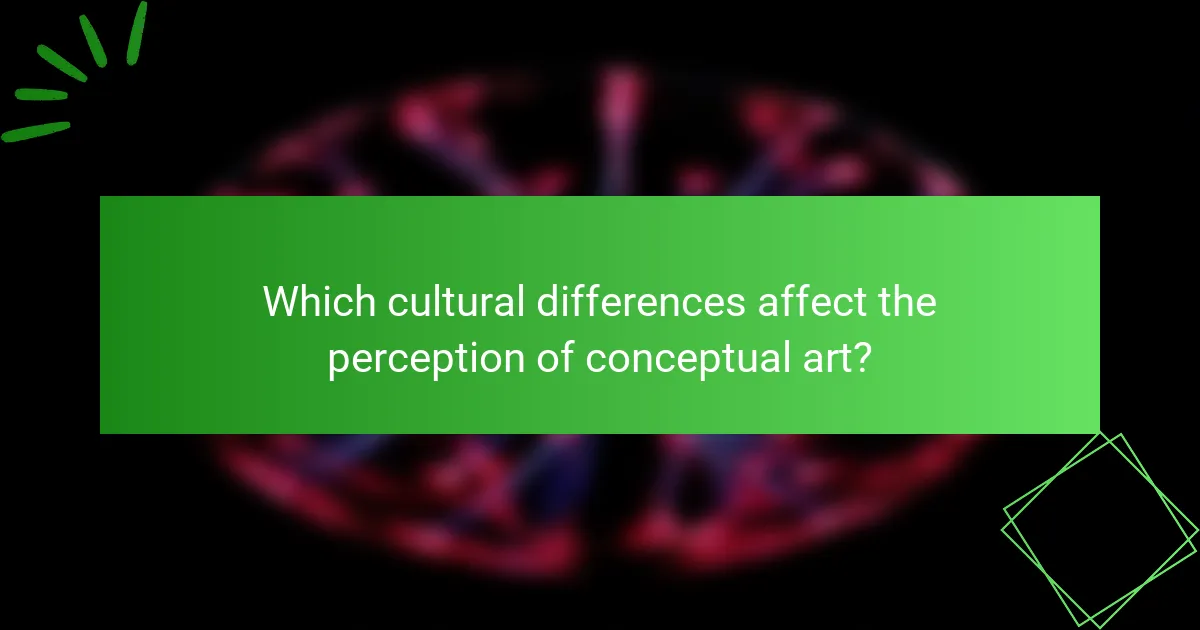
Which cultural differences affect the perception of conceptual art?
Cultural differences significantly influence the perception of conceptual art. Factors such as historical context, societal values, and artistic traditions shape how audiences interpret and appreciate this art form. For instance, Western cultures often emphasize individualism and innovation, leading to a focus on the artist’s intent. In contrast, collectivist cultures may prioritize communal narratives and the artwork’s role within society. Additionally, exposure to different art movements affects understanding; audiences familiar with modernism may engage differently than those rooted in traditional practices. As a result, the interpretation of conceptual art varies widely across cultures.
How is conceptual art interpreted in contemporary Russian art scenes?
Conceptual art in contemporary Russian art scenes is interpreted as a reflection of social and political discourse. Artists utilize conceptual frameworks to challenge norms and provoke thought. Key works often blend personal narratives with broader cultural critiques, revealing unique attributes of Russian identity. The rare integration of traditional techniques with modern themes distinguishes this movement within the global art landscape.
What unique attributes of conceptual art resonate with UK audiences?
Unique attributes of conceptual art that resonate with UK audiences include its emphasis on ideas over aesthetics and its engagement with social issues. Many UK artists use conceptual art to challenge traditional norms, encouraging critical thinking. This art form often incorporates local cultural references, making it relatable. Additionally, the interactive nature of many conceptual works invites audience participation, enhancing personal connections.
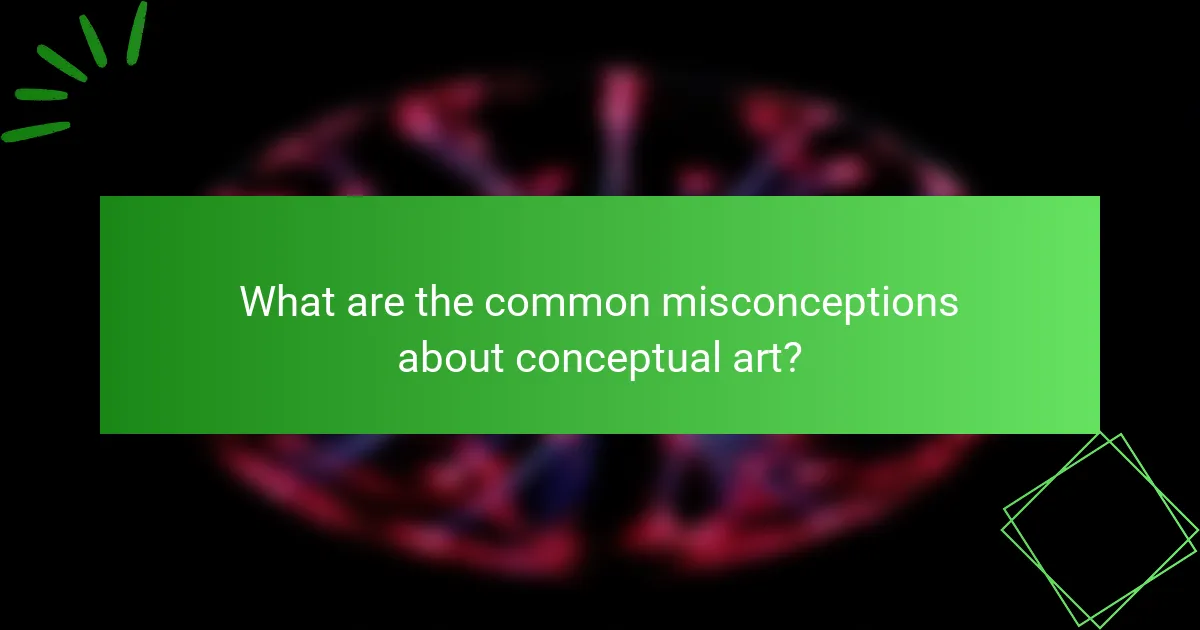
What are the common misconceptions about conceptual art?
Many misconceptions about conceptual art stem from its emphasis on ideas over aesthetics. Common beliefs include the notion that conceptual art lacks skill or that it is merely a trend. Some people think that all conceptual art is incomprehensible or that it does not require effort to create. Additionally, there is a belief that conceptual art is only for the elite or that it has no connection to traditional art forms. These misconceptions overlook the depth and intention behind conceptual works, which often challenge viewers to engage intellectually and emotionally.
Why do some critics dismiss conceptual art as non-art?
Critics often dismiss conceptual art as non-art because they prioritize traditional aesthetics over intellectual engagement. This perspective overlooks the philosophical foundations that define conceptual art as a legitimate form of expression. Conceptual art challenges conventional notions of creativity, emphasizing ideas over craftsmanship. The unique attribute of this art form lies in its ability to provoke thought and discussion, which some critics find disconcerting. As a result, the debate about its validity continues, highlighting a divide between different artistic philosophies.
How can conceptual art be misunderstood in different cultural contexts?
Conceptual art can be misunderstood due to varying cultural interpretations and values. Different societies may prioritize distinct artistic traditions, leading to diverse receptions of conceptual works. For example, a piece that challenges norms in one culture may be perceived as offensive in another. Additionally, the philosophical foundations of conceptual art can conflict with traditional views on art’s purpose, causing further misunderstandings. Cultural context shapes the interpretation of symbols and messages, influencing how audiences engage with the artwork.
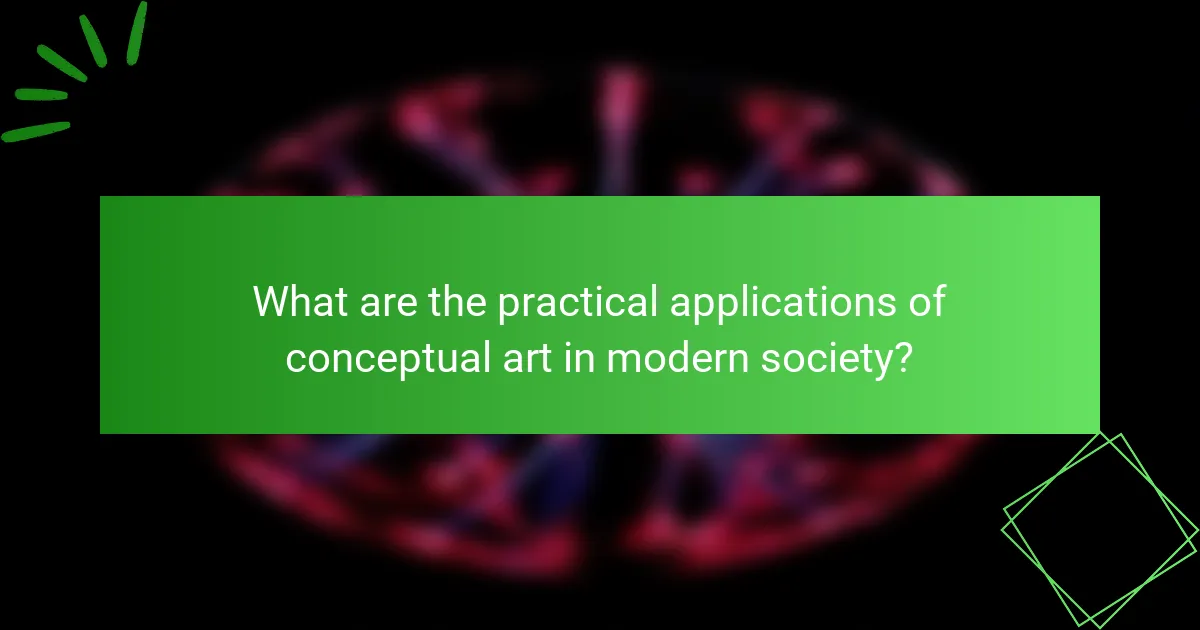
What are the practical applications of conceptual art in modern society?
Conceptual art has diverse practical applications in modern society, influencing various fields. It promotes critical thinking, challenges societal norms, and fosters dialogue about complex issues.
One application is in education, where conceptual art encourages creativity and enhances problem-solving skills. Artists use it to engage audiences in discussions about identity, politics, and culture, making art a tool for social change.
In business, conceptual art informs branding and marketing strategies by emphasizing unique narratives and emotional connections. Companies utilize conceptual art to differentiate themselves in competitive markets, appealing to consumers’ values and experiences.
Public spaces often feature conceptual art installations, enhancing community engagement and transforming urban environments. These artworks can provoke thought, inspire action, and create shared experiences among diverse populations.
How can businesses leverage conceptual art for branding?
Businesses can leverage conceptual art for branding by enhancing their identity and engaging audiences. Conceptual art provokes thought and emotion, allowing brands to communicate deeper messages. By integrating unique artistic expressions, companies differentiate themselves in competitive markets. Collaborating with artists can create memorable campaigns that resonate with target demographics, fostering loyalty.
What lessons can educators draw from conceptual art for teaching creativity?
Educators can learn to foster open-ended thinking and experimentation from conceptual art. This art form emphasizes ideas over traditional aesthetics, encouraging students to explore diverse perspectives. By integrating conceptual art principles, educators can promote critical thinking and innovation in their teaching practices. Conceptual art challenges norms, inspiring students to question assumptions and develop unique solutions. This approach nurtures a creative environment where exploration and expression are valued.
What best practices should artists follow when creating conceptual art?
Artists creating conceptual art should prioritize clear communication of ideas and engage viewers intellectually. Emphasizing originality and context is crucial. They should also explore diverse mediums and challenge traditional boundaries. Collaboration and feedback can enhance the creative process, fostering innovation. Lastly, artists should remain open to interpretation, allowing their work to resonate on multiple levels.
